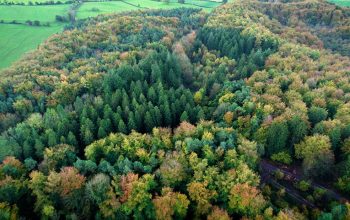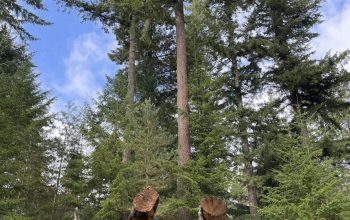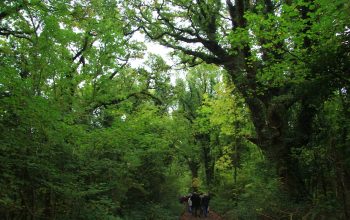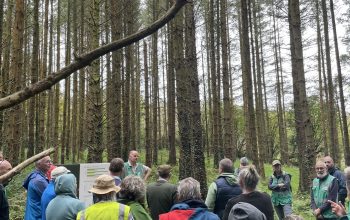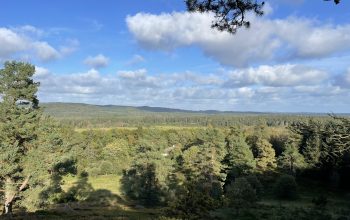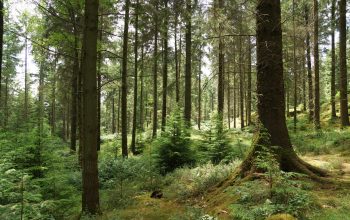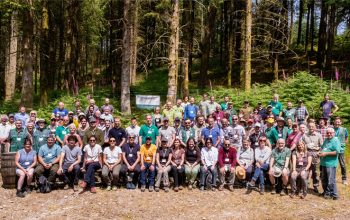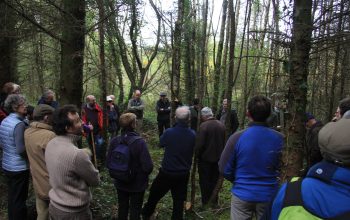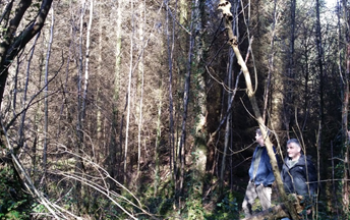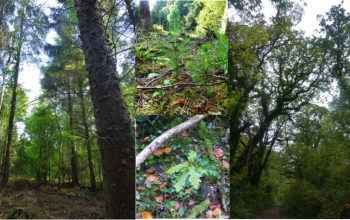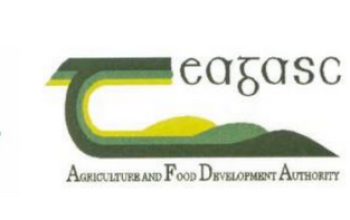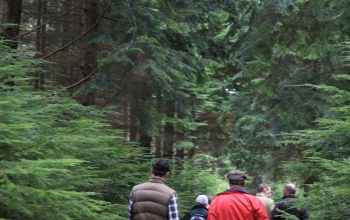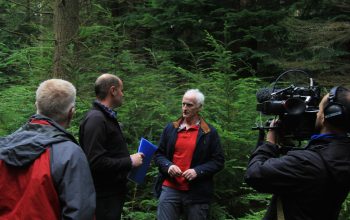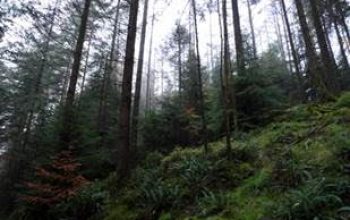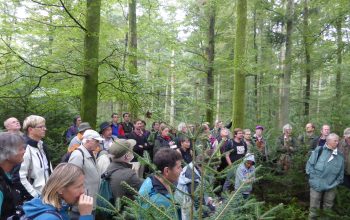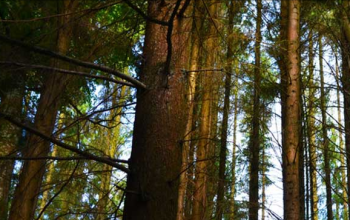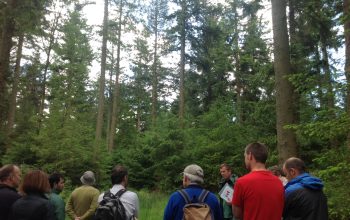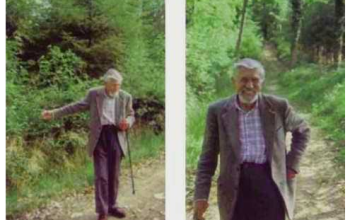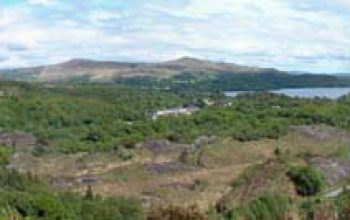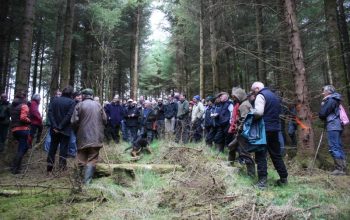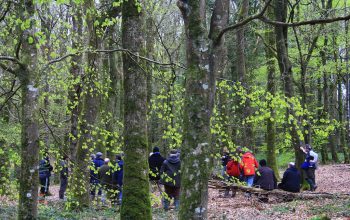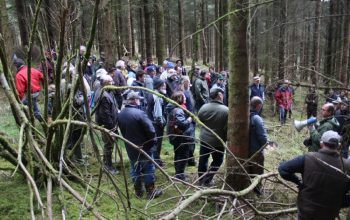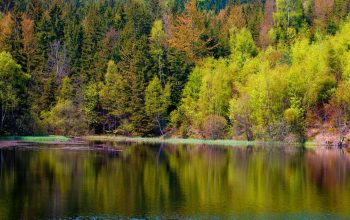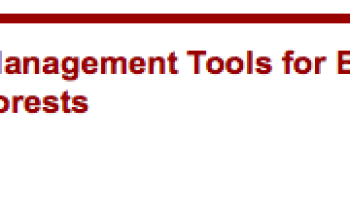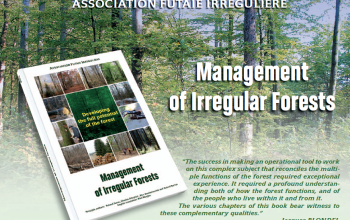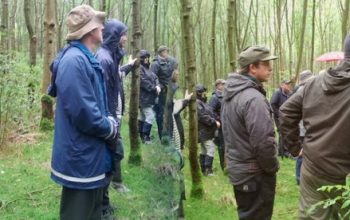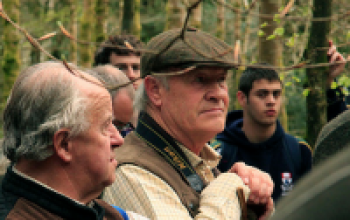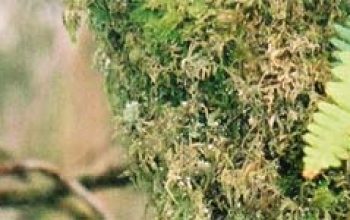The Pro Silva Ireland 2019 Spring Field Day was held on April 27th in Ballycullen Forest in Ashford, Co. Wicklow and was kindly hosted by Sandra and Lasse Jorgensen. Padriag O Tuama has written a report on the day below –
“Early Stages of Transformation to Continuous Cover Forestry (CCF) in Farm Forest conifer plantations”

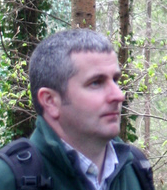
Paddy Purser, Forest Manager for the forest lead the group for the day with Liam Byrne, whose harvesting team was carrying out thinning on the site. Expert Assistance on the research project was provided by Ted Wilson, Teagasc Walsh Fellow and Silviculturalist with expert viewpoint form continental perspective provided by Dr Pavel Bednar of Pro Silva Bohemica
The main element of the field day was a thinning experiment started under the Low Impact Silvicultural Systems (LISS) Project and continued under the TranSSFor Project looking at the most effective ways of initiating transformation from even aged spruce plantations to CCF. The focus of the TranSSFor project is a study of thinning in mid-rotation Sitka spruce stands being transformed to continuous cover forests. Experimental sites are located at two locations

in Ireland, with “low”, “crown” and “graduated thinning” treatments. Ballycullen is one of two sites in this study. The area for the experiment is a pure SS stand planted in 1993 that has
had 2 previous thinning’s under the LISS research project and now a 3rd thinning taking place this spring. Marking selection had been carried out on the three treatments and harvesting had just started on the site with thinning carried out on each of the three treatments to demonstrate the effects of the different thinning treatments. Ted Wilson outlined the main objectives
of the TranSSFor research project and described the different treatments. His research will also provide an assessment of various stand parameters such as potential stand

stability, impact on diversity and canopy cover, tree and stand increment, production and economics of using alternative thinning regimes. The project will use data from the study to date for modelling future stand development.
The main elements that stood out to the c. 50 people in attendance was the differentiation between the three treatments in terms of light/shade and tree size. There was discussion on the form and quality of the trees remaining and the depth of crown. The point was made on the importance of forester selecting and marking the trees being removed and that the quality and form of the trees remaining in the crown and graduated density thinning’s relative to the low thinning was due to the removal of the poorer quality trees regardless of size.
There were a number of questions to Liam and Paddy on harvesting and timing of operations especially with potential for damage to remaining trees doing harvesting in springtime. There were questions on planning of rack infrastructure and about cost implications of working within the various treatments. There were questions of the selection parameters for the quality trees in the crown and graduated density treatments. One of the lessons being learnt from theses thinning trials is the consideration of the timing of the selection of the quality trees in the process and/or the proportion of thinning to be carried out to release the quality trees. There were questions on stability and also on looking for natural regeneration. It was explained that this was still at the early stage in transformation to CCF and that these initial thinning interventions were creating the irregularity within the forest and creating the conditions for natural regeneration to occur.


The second stop after lunch was in a poor-quality mixed hardwood plot. This was a Sycamore woodland. It was planted at the same time as the main area of Sitka spruce but had been badly affected by deer damage. Sitka spruce had been filled in to create a 70/30mixed broadleaf/conifer forest. The quality of the Sycamore was very poor with very few trees of any quality within the stand. A tending operation was planned for the first intervention to take place in conjunction with the thinning operations in the forest. Paddy had marked the few potential quality trees and the plan was to do halo thinning to release these trees to develop a crown. Thinning will be to waste and a full thinning and selection operation will take place at the next intervention. There was a lot of discussion the prescription that Paddy had outlined and general agreement that it was the best option on a site with such poor-quality trees. The point was made that the forest has been created, even it was made up of very poor-quality trees but that the objective was to maintain forest cover and condition from which good quality will be achieved through natural regeneration.

The final stop was a 1st thinning in a mixed Japanese larch / Douglas fir / Sitka spruce conifer stand. This was also planted at the same time as the main area of spruce. It had been originally planted with Douglas fir that had been badly affected by deer damage and the failed areas filled in with Larch and spruce. What is present now is a forest that at first impression looks a very poor-quality mixed conifer forest where poor quality larch was dominating any DF and a site that would provide a challenge to carry out thinning intervention. However, when one looked closer at the forest one could see very good quality DF and SS in the sub-dominant category with some very good quality larch as well. The prescription entailed a one line in eight rack infrastructure with selection to be the removal of the “biggest-baddest” dominant larch and Douglas. The challenge for the harvesting operators was in managing the felling and removal of these biggest baddest trees within the confines of a first thinning without damaging the smaller good quality DF and larch in the matrix. Again, there was general approval of the prescription being applied to the forest and general agreement that this novel approach could be adopted in many more similar sites where intervention is taking place way to late in the cycle creating instability issues in forests similar to this.

Padraig O Tuama
12th June 2019



